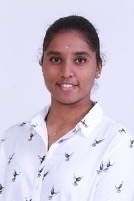GP Short Notes # 624, 28 March 2022
 Padmashree Anandhan
Padmashree Anandhan What happened?
On 24 March, G7 leaders gathered at the NATO Summit, organized by Germany at the NATO headquarters in Brussels. In the statement released by the G7 leaders: “We, the Leaders of the G7, met today in Brussels at the invitation of the German G7 Presidency, to further strengthen our cooperation in light of Russia’s unjustifiable, unprovoked and illegal aggression and President Putin’s war of choice against independent and sovereign Ukraine. We will stand with the government and people of Ukraine.”
After the summit, NATO Secretary-General Jens Stoltenberg, in his address, said: “NATO leaders agreed that we must and will provide further support to Ukraine. We will continue to impose unprecedented costs on Russia. And we will reinforce Allied deterrence and defence. So NATO leaders agreed to redouble efforts to meet the Defence Investment Pledge we made in 2014.”
US President Joe Biden highlighted three key issues and said: “First was to support Ukraine with military and humanitarian assistance. Second was to impose the most significant — the most significant sanctions — economic sanction regime ever to cripple Putin’s economy and punish him for his actions. Third was to fortify the eastern flank of our NATO Allies, who were obviously very, very concerned and somewhat at — worried what would happen.” During his visit to Poland, along with President Andrzej Duda of Poland, He said: “I strongly believe that this partnership that we have between the United States and Poland in the development of nuclear energy in our country, in close cooperation between our two states, will be implemented and finalized.”
What is the background?
First, the focus on Ukraine beyond the trans-Atlantic. The G7 leaders, along with NATO, the EU, and the US, stand united in condemning Russia’s attacks on Ukraine and imposing massive sanctions to end the war. On Ukraine, the bloc has decided to increase the military capability, air defence, and maritime capacity. They also promised to protect against chemical, biological, and nuclear-related threats.
Second, the four-way defence. Through the summit, the defence systems in land, air, water, and cyber defences were strategized. On ground, the NATO has been supporting Ukraine militarily. In the air, the NATO leaders have agreed to strengthen through jets, integrated air, and missile defence. At sea, they have approved making the carrier strike groups, submarines, and combat ships. Apart from the three forms, they have also agreed to strengthen the cyber domain, focusing on enhancing exercises, collective defence, and interoperability.
Third, securitizing the region from the Baltic to the Black Sea. NATO, along with the EU leaders and Canada, agreed to focus on eastern Europe with 40,000 troops under NATO command and deploy additional forces along with equipment and supplies in Bulgaria, Hungary, Romania, Slovakia, Georgia, Bosnia and Herzegovina and Poland. NATO Secretary-General confirmed the deployment of eight multinational NATO military groups from the Baltic to the Black Sea. The US and Europe also have agreed to increase their military presence to support NATO.
Fourth, the focus also on conflict de-escalation. While many European countries stepping up their military and troops in eastern Europe and supporting Ukraine have equally ensured not escalating the conflict. In economic measures and deploying security, NATO and its allies have avoided taking an offensive approach. NATO and the allies refrain from involving directly and have opted for “preventive, proportionate, and non-escalatory,” methods in handlining the war.
Fifth, commitment to NATO policy. At the summit, the leaders reiterated their commitment to NATO’s Open Door policy under Article 5 and Article 10 of the Washington Treaty. This shows the possibility of other European members joining NATO and the bloc’s assurance to guard the sovereignty of its allies.
What does this mean?
First, a united posture against Ukraine. While the efforts of the UNSC failed to reach a resolution to make Russia withdraw its military from Ukraine, the meeting of NATO, the EU, the US, and the G7 has risen to be a separate bloc to stand against Russia. It can be observed as a posture or an alternate force to the UN.
Second, the China question. From the US, the EU, and leaders of the G7, similar to the warning they issued to Russia to stop it from invading Ukraine, can be seen to be doing the same with China. No other preventive measure has been taken to keep China away from Russia.
Third, the stress on self-defence. The top world leader met to discuss military, humanitarian, and defence aid. But when it came to helping Ukraine directly, all the state players have tactfully avoided keeping de-escalation as a reason. On the ground, Ukraine is left to defend Russia alone.